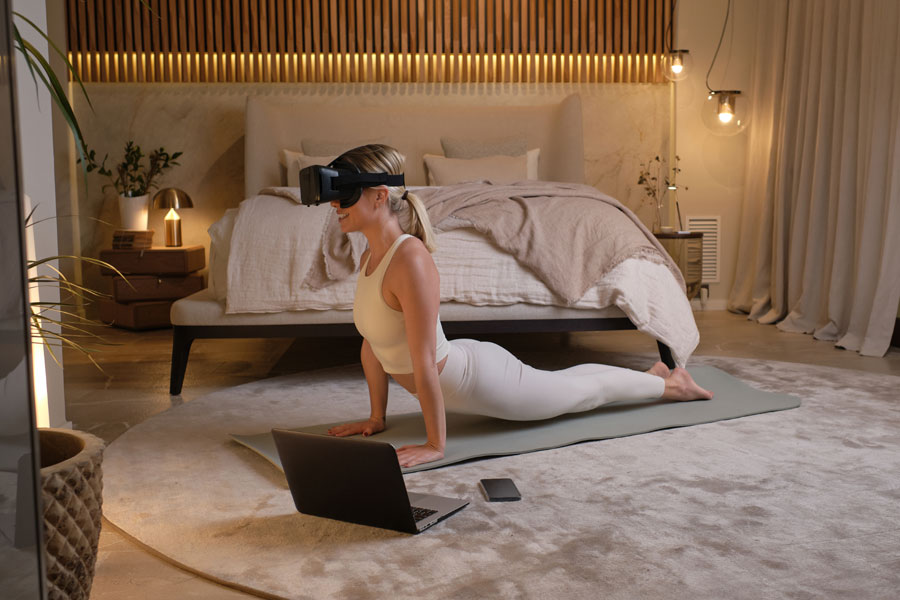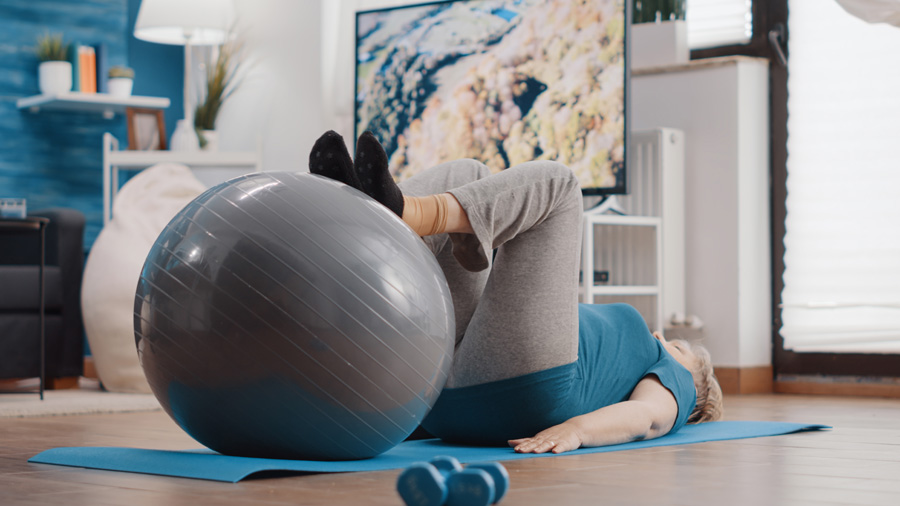Augmented reality (AR) is a technology that overlays digital information on top of the real world, while virtual reality (VR) creates a completely immersive digital environment. While AR and VR are often used interchangeably, they are distinct technologies with different applications. In physical therapy, Augmented Reality can be used as an additional tool to enhance the therapy experience, as it allows physiotherapists to provide visual feedback or instructions to the patient, while they are performing the therapy exercises. For example, an AR application could be used to display a virtual skeleton on top of the patient's body, allowing the therapist to see exactly how the patient's movements are aligning with the correct form, and make adjustments as needed. Additionally, AR can also be used to enhance patient motivation and engagement by adding interactive and game-like elements to therapy exercises. In summary, while VR is used to create fully immersive digital environments, AR can be used to enhance the real world with additional information or interactive elements. Both technologies have the potential to be used in physical therapy, but in different ways and for different purposes.
Here are a few examples of how augmented reality (AR) technology is being used in physical therapy:
Augmented Reality (AR) has distinct advantages in physical therapy, including the integration of exercise displays with the patient's own environment. Here's an overview of why AR is particularly effective in this field:
- Integration with Real Environment: AR overlays digital information onto the real world, allowing patients to see and interact with virtual elements in their own physical space. This feature is invaluable as it enables patients to perform exercises while viewing their actual surroundings, making the experience more natural and less disorienting than complete virtual immersion.
- Enhanced Exercise Display: In AR physical therapy, exercises can be displayed in the context of the patient's environment. This can make it easier for patients to understand and replicate the exercises correctly, as they can see how their movements fit within their own space.
- Real-time Feedback with Environmental Context: AR can provide real-time feedback on the patient’s performance while keeping the context of their environment in view. This helps in maintaining spatial awareness and can improve the accuracy of exercise execution.
- Enhancing Patient Engagement: Similar to VR, AR can also incorporate gamification elements. These elements, placed in a familiar environment, can significantly boost motivation and adherence to therapy routines.
- Safety in Familiar Surroundings: Since AR allows patients to stay aware of their physical surroundings, it enhances safety, particularly for those who may have balance issues or are at risk of falls.
- Personalised Therapy Experience: AR applications can be tailored to individual therapy needs, allowing therapists to design specific exercises that align with the patient's physical environment and capabilities.
- Combination of Physical and Digital Therapy Tools: AR can blend physical therapy tools with digital enhancements. For instance, a physical object used in therapy can be visually transformed or tracked in AR, offering a unique interactive experience.
- Useful for Various Therapeutic Needs: AR is adaptable for a wide array of therapeutic needs, from orthopaedic rehabilitation to neurological conditions. It can enhance both physical and cognitive aspects of therapy.
In summary, AR in physical therapy offers an innovative blend of digital and physical elements, enhancing patient engagement and safety while providing a customizable, accessible, and effective rehabilitation experience. Its ability to integrate seamlessly with the patient's environment makes it a versatile and practical tool in modern physical therapy practices.
Here are a few examples of how augmented reality (AR) technology is being used in physical therapy:
- Visual feedback: AR can be used to provide patients with visual feedback on their movements during therapy exercises. For example, an AR application could display a virtual skeleton on top of the patient's body, allowing the therapist to see exactly how the patient's movements are aligning with the correct form, and make adjustments as needed.
- Rehabilitation: AR can be used to help patients recover from injuries or surgeries by providing virtual cues to guide them through exercises. For example, an AR application could display a virtual guide on the patient's hand, showing them how to correctly perform a grip exercise.
- Balance training: AR can be used to provide patients with visual cues to help them improve their balance during exercises. For example, an AR application could display virtual targets on the floor, showing patients where to step to maintain balance.
- Motivation and engagement: AR can be used to make therapy exercises more engaging and interactive, which can help to improve patient motivation. For example, an AR game could be used to have patients catch virtual objects, to help them improve their hand-eye coordination and fine-tune motor skills.
These are just a few examples of how VR technology is currently being used in physical therapy, and as the technology continues to evolve, it's likely that we will see even more innovative uses for VR in this field in the future. Physia Clinic (physiaclinic.com) has been working on VR and AR environments for physical therapy.




